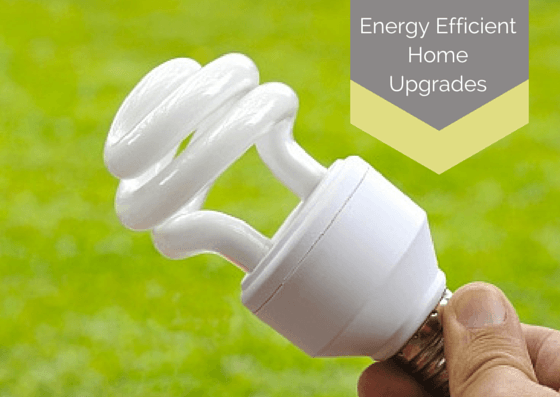With many people becoming more conscious and aware of their carbon footprints, having an energy efficient home is a big step in reducing that number. If you're looking to make some changes to your home, start off with these 10 energy efficient home improvements to not only help out your wallet, but Mother Nature as well. 
Get an audit
First things first, get an audit--and no, not the tax variety. An energy audit is a great way to figure out a starting point for your home improvements. A professional will inspect and evaluate your house and determine which areas need to be improved and where to focus your attentions. After you've gotten your report you should have a better understanding of what's necessary to improve your home's energy usage.
1. Plug leaks
If you're feeling any drafts around your windows and doors, seal them up. Reducing the amount of warm and cool air that escapes your home will go a long way to making your home more energy efficient. Walk around your home and hold your hand around window edges and door frames-if you feel or hear any air, there's a draft that will need to be sealed.
2. Insulate
Insulating your home is important so your home remains comfortable and your wallet full. Adding insulation will keep you warmer in the winter and cooler in the summer, so you won't have to crank up the heat or air conditioner. Check your attic and basement and see if the insulation (if any) could use another layer. If there is no insulation in either area at all, install some to prevent any energy loss.
3. Seal the ducts
Forced-air heating and cooling systems utilize ducts to carry air throughout the home. Often enough the joints between connecting ducts are not sealed properly and air escapes through leaks. Use a duct sealant to repair any leaks in exposed ductwork.
4. Install a thermostat
Did you know you can install a programmable thermostat? This allows you to put your heating and cooling system on a timer so that it doesn't run when no one is around. If you and your family are out for most of the day, there's no need to run your system while you're away. Schedule the system to turn on as you're coming home or shut off as you're about to leave.
5. Replace old windows
Replace any old, leaky windows with energy rated models. Wood-framed windows add in a bit more insulation.
6. Replace doors
Just like your windows, replace any old and leaky doors with energy efficient models. When choosing doors, stay away from hollow, metal doors and opt for something sturdier--otherwise the wind will have an easy time passing through the door.
7. Storm windows
If you're balking at the idea of replacing your old and leaky windows, add storm windows to the list instead. They are often a more cost-effective way to insulate your home without a full-blown window replacement project. If the interior windows of your home are still in good shape, storm windows are a quick way to increase the energy efficiency without a major overhaul.
8. Energy efficient appliances
Your appliances can be your enemy when it comes to being energy efficient. If you can, replace your appliances with newer more energy-efficient versions. This can be done one at a time--but if you're replacing your appliances, make sure that your home is entirely sealed first.
9. Insulate your pipes
You can save about $15 annually by insulating your hot water pipes. It may sound like small potatoes, but any little bit should help. It reduces heat loss and can raise your water temperature by 2 to 4 degrees Fahrenheit, leading to toastier showers in the winter. Bonus: you won't have to wait as long for your water to heat up, allowing you to conserve.
10. Switch your light bulbs
Who would have thought that something as simple as switching the type of light bulbs used would make a difference? Energy efficient light bulbs use about 70 to 90 percent less energy than traditional incandescent bulbs and can last 10 to 25 times longer, saving you $30 to $80 in electricity costs over its lifetime.